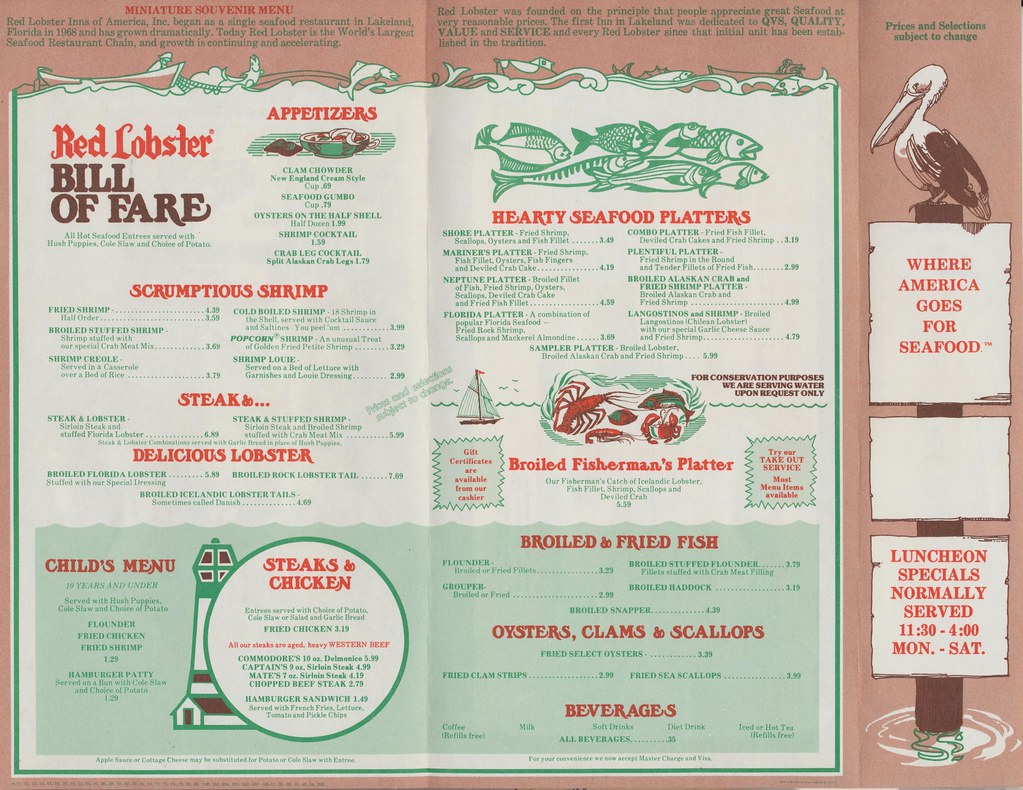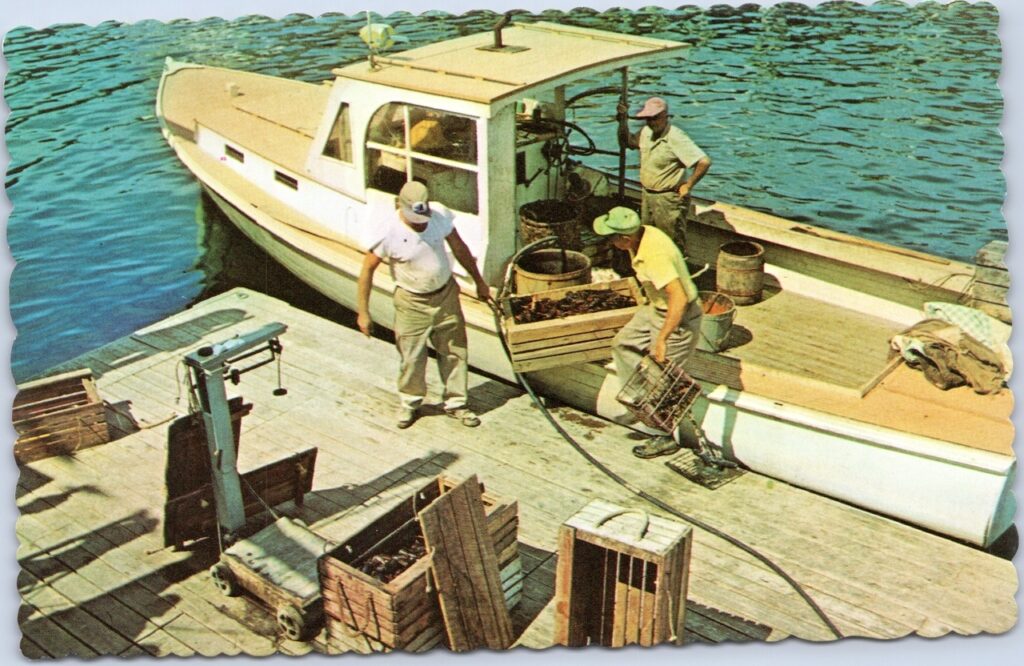A month ago, I had never been to a Red Lobster. Despite my long-held belief that no feast looks more perfect than the seafood in a Red Lobster ad and my career as a food writer — the author of a seafood cookbook, at that — circumstances had always kept me from finding out if the TV spots I’d been drooling over since before I could spell “crustacean” were too good to be true.
The voiceover might say endless shrimp, but what I saw was endless butter, dripping down the scarlet lobster shell as dulcet tones sing of an abundance of something that I always considered a special treat. I wanted to believe that the magical food styling on my screen could serve me life-changing lobster in much the same way other people want to believe their partner is actually working late (hon, it’s a pandemic, where are you actually) or that their teenager reeks of patchouli and mouthwash only because she likes the smell: enough that I could convince myself despite overwhelming evidence to the contrary.
But lobster was an East Coast seafood and the bottomless butter a rebuff of my parent’s low-fat, ‘80s lifestyle centered on the soft, strange tubs of margarine in our refrigerator. Not to mention that in Seattle, where the Pacific Northwest independent streak keeps chains mostly to the suburbs, the tauntingly unattainable dishes in soft-focus between plays of football games held much of the alluring foreign-ness that a Burmese restaurant might have had in North Dakota.

Still, my parents had yet one more reason for not fulfilling my butter-scented dreams, and it involved a large anthropomorphic rat that goes by the name Charles Entertainment Cheese. See, Red Lobster was not my first foray into the marketing sway of chains: at the age of four the one thing I wanted in the entire world, or at least so I told my parents, was a birthday party at Chuck E. Cheese.
After months of trying to convince me that my joy did not lie in a germ-filled pit of plastic and pizza made, quite possibly, of the same material, they gave in and arranged for a sojourn to whichever southern Seattle suburb held the beacon of manufactured fun with whichever gaggle of toddlers I’d chosen to join me. That was over three decades ago, and I have yet to be forgiven for forcing this adventure upon them.
The décor, to paraphrase the quote (likely falsely) attributed to Churchill about vermouth in martinis, seemed to have once looked at a nautical scene from across the room.
By the time I made my own money, I was in college in New Hampshire. I made up for some lost time at chain restaurants, eating my way through what I had missed out on: Chili’s baby back ribs **insert music** I want my baby back, baby back, baby back, all the cheesy fried appetizers that an Applebee’s could put in front of me, and the occasional ice cream sundae from TGI Friday’s. But even Red Lobster knows that the limits of its Cheddar Bay magic stops at the New England border — the nearest location was nearly 75 miles away.

And so, halfway through my 36th year on this earth, it was finally time. The logistical issues were still there — with evening traffic, the closest Red Lobster to my house was about 40 minutes away — but it was time to stop letting it own the space in my brain. “Don’t get your expectations up,” friends warned me. “It’s all about the biscuits,” others said, trying to temper my excitement. I tried to weave realism into the images, to envision the difference between, say, a McDonald’s French fry on an ad and the real thing. Wait, that’s a bad example, those are the best fries on earth (fight me, I mean it). I went in hoping for the best, expecting the worst.
The possibility of a sobering reality filled with murky tanks and mediocrity behind the crimson shellfish logo couldn’t deter me, though. It felt different than I expected, more serious than other chains. The décor, to paraphrase the quote (likely falsely) attributed to Churchill about vermouth in martinis, seemed to have once looked at a nautical scene from across the room.
The vaunted Cheddar Bay biscuits arrived almost immediately, unfortunately timed perfectly with the departure of my own willpower (just kidding, that never existed). I could no more resist the platonic ideal of carbohydrate — warm, fluffy, salty, and buttery — than I could the shiny marketing messages. But like so much at chain restaurants, the biscuits were at once flavorful and yet tasted of very little, in the kind of inoffensive way that makes them easy to eat in large quantities. I barely looked up until after the third one, which coincidentally was right around the arrival of my mozzarella sticks.
Who orders mozzarella sticks at a seafood restaurant? Well, first of all, it is a seafood restaurant known for its biscuits, so there’s no telling what you’re supposed to do. Second of all, the menu was so big and so confusing that I had to place an appetizer order to tide me over through the decision making. But half the appetizers seemed like they might involve what I would order for dinner, so I went with mozzarella sticks — one of my very favorite foods in the world, and also definitively nothing like what I planned for my entrée. The sticks, like the Caesar salad that followed, were emblematic of what was to come: they were a fine but slightly below-average rendition of a classic. But like a brainwashed victim of those ads, I remained enthusiastic for my main dish — my meal was, so far, quite pleasant, and that on its own exceeded expectations.
It tasted exactly like so much chain restaurant food does: a watered-down version of the real thing. Good enough to taste the excitement, but nothing like a better version of it.
Even as I wove my way through the maze of a menu, all I wanted was the thing that looked most like those ads. Since I didn’t see a vat of butter explicitly spelled out, I eventually settled on what seemed to be the obvious answer: it was Lobsterfest at Red Lobster and so I ordered a whole lobster.
Moments later, the server returned with bad news: the only lobsters they had were missing a claw. Would I accept a one-clawed beast feast in return for a 25% discount? I politely accepted before laughing at the ludicrous situation, and right there my vision of picture-perfection popped. I would not be getting the lobster I remembered from childhood, the ads probably involved brushed-on motor oil and a can of red paint.
The sullied specimen arrived, bland and slightly overcooked. It was neither the unbridled success I secretly hoped for nor the grave disappointment I feared. It tasted exactly like so much chain restaurant food does: a watered-down version of the real thing. Good enough to taste the excitement, but nothing like a better version of it. Like centrist politics, it is a version that requires considerably less risk to enjoy but comes with less reward.
And, surprisingly, given my political and culinary stances that favor independent restaurants first and foremost, I came away from Red Lobster with an understanding of the fandom. The biscuits were good and, though I forced myself to stop at five, theoretically infinite (unlike the lobster claws). But it’s fun to be a fan of something — whether it’s communing over carbs or loving the latest pop star. People like to love things, and I might never be joining the Cheddar Bay Biscuit booster club, but I’m not here to begrudge anyone their desire to devote themselves to the worship of a bread product.
But maybe I’ll change my mind when I take my first taste of the Olive Garden’s breadsticks.
